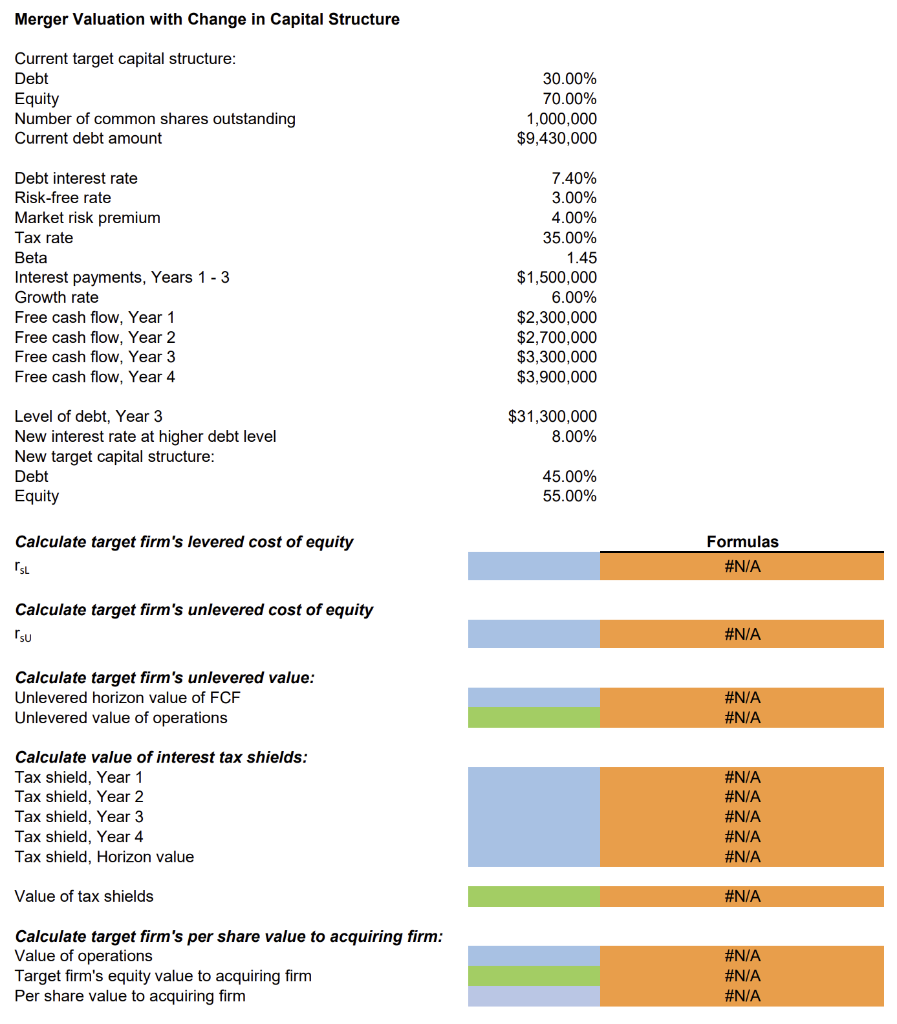Question
Hastings Corporation is interested in acquiring Vandell Corporation. Vandell has 1 million shares outstanding and a target capital structure consisting of 30% debt. Vandell's debt
Hastings Corporation is interested in acquiring Vandell Corporation. Vandell has 1 million shares outstanding and a target capital structure consisting of 30% debt. Vandell's debt interest rate is 7.4%. Assume that the risk-free rate of interest is 3% and the market risk premium is 4%. Both Vandell and Hastings face a 35% tax rate.
Vandell's beta is 1.45. Hastings estimates that if it acquires Vandell, interest payments will be $1,500,000 per year for 3 years. The free cash flows are supposed to be $2.3 million, $2.7 million, $3.3 million, and then $3.90 million in Years 1 through 4, respectively. Suppose Hastings will increase Vandell's level of debt at the end of Year 3 to $31.3 million so that the target capital structure will be 45% debt. Assume that with this higher level of debt the interest rate would be 8.0%, and assume that interest payments in Year 4 are based on the new debt level from the end of Year 3 and new interest rate. Free cash flows and tax shields are projected to grow at 6% after Year 4.
What is the value of the unlevered firm?
What is the value of the tax shield?
What is the maximum total price that Hastings would bid for Vandell now? Assume Vandell now has $9.43 million in debt.

Step by Step Solution
There are 3 Steps involved in it
Step: 1

Get Instant Access to Expert-Tailored Solutions
See step-by-step solutions with expert insights and AI powered tools for academic success
Step: 2

Step: 3

Ace Your Homework with AI
Get the answers you need in no time with our AI-driven, step-by-step assistance
Get Started


